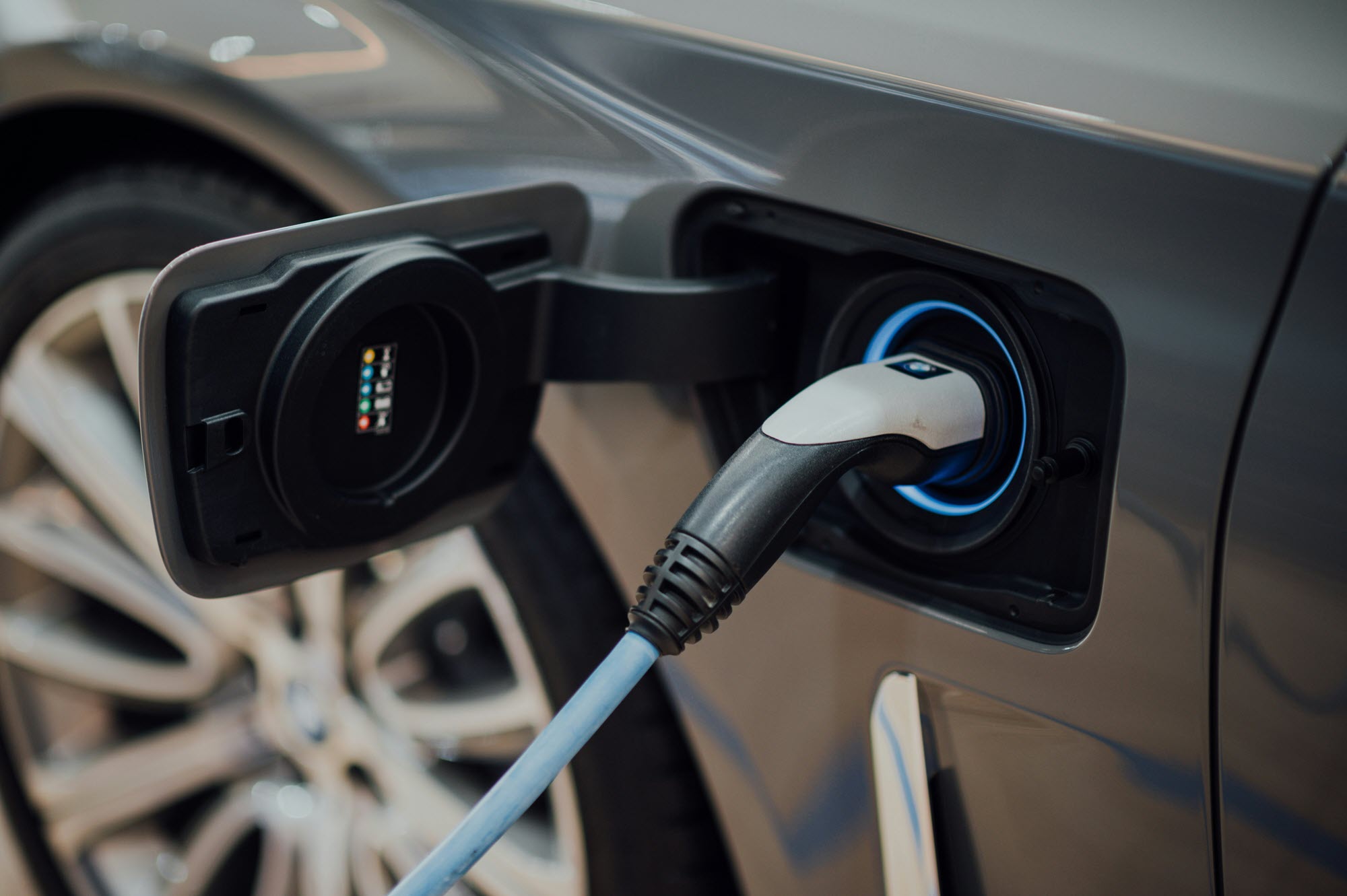
The summer driving season is here, and electric vehicles are more accessible than ever.
EV options have diversified over the past few decades, and their popularity has steadily grown as new models continue to hit the market. In the first quarter of fiscal year 2025, hybrid, battery electric, or plug-in hybrid vehicles accounted for approximately 22% of light-duty vehicles sold in the United States.
With new choices and more affordable options becoming available, there is no doubt that EVs are here to stay. But despite offering an answer for emissions reduction, they have raised new questions for the future of public roadway infrastructure funding. It was a hot topic in the recently passed budget bill signed into law by President Donald Trump last week.
The gas tax lags behind
The majority of U.S. highway and public transit projects are funded through the Highway Trust Fund, which receives the bulk of its funding from the federal fuel tax.
Established in fiscal year 1983, the fuel tax sits at 18.4 cents per gallon of gasoline and 24.4 cents per gallon of diesel. But despite decades of economic shifts and inflation, these numbers have not been adjusted since 1993.
The purchasing power of the Highway Trust Fund has varied over time, and today, it is 80% weaker than when it was last updated.
On top of that, EVs are not paying into the fund. In fact, until now, individuals purchasing or leasing both new and used EVs have received tax credits.
“Now, we are getting hybrid vehicles, compressed natural gas vehicles, electric vehicles,” said Jim Pajk, P.E., M.ASCE, administrator of the division of design and construction for the city of Columbus, Ohio. “And as that builds, we’re having more people using the roads who aren’t really contributing anything towards that.”
Full EVs do not pay a fuel tax, and hybrid vehicles pay less than gas-powered vehicles.
Since 2001, Highway Trust Fund expenditures have exceeded revenue. The Congressional Budget Office expects this trend to continue and forecasts that expenditures could exceed revenue by about $40 billion in fiscal year 2029. It also predicts that the highway account might fail to acquire enough revenue to meet federal obligations in FY 2028.
With the Highway Trust Fund already in jeopardy, the adoption of EVs across the nation presents a challenge for funding roadway infrastructure projects.
“We still need to maintain the traditional way of funding with fuel taxes,” Pajk said. “I don’t think that’s going to go away, but we need to start thinking of other ways to make it more sustainable and more resilient, which is something that agencies at all levels can count on.”
Taxation models spur debate
“EVs need to pay their share – that’s all there is to it,” Rep. Sam Graves, R-Mo., chair of the House Transportation and Infrastructure Committee, said at the 2025 ASCE Solutions Summit in March.
Many policymakers and infrastructure experts agree with this sentiment, but there is not yet a strong consensus on how exactly EVs should be taxed. Graves suggested charging a fee of around $225 – the average amount a person spends in fuel tax annually – at registration for EVs each year.
Some states have already begun implementing annual fees for EV owners, including California and Illinois, which charge $100 each year, and New Jersey, which collects $250.
Many members of Congress pushed for a federal EV tax. A far-reaching budget bill – dubbed the “One Big Beautiful Bill” – initially proposed by House Republicans included measures to tax EV owners $250 per year and a new $100 annual fee for hybrid vehicle owners. Proponents of this legislation expected these taxes to raise over $800 million for the Highway Trust Fund annually.
But this portion of the legislation, which was included when the House passed the bill, was omitted from Senate version and did not make the cut when the president signed the bill into law on July 4.
Although the law did not add new taxes, it declared an end to existing EV tax credits – $7,500 for buying or leasing new EVs and $4,000 for used EVs – effective Sept. 30.
An annual fee would be a Band-Aid solution, but it wouldn’t necessarily be equitable, noted Kristina Swallow, P.E., Pres.18.ASCE, assistant city manager of Tucson, Arizona. With this model, people who drive infrequently will pay the same amount as those who use roadways on a regular basis.
“It’s not linked to your consumption – it’s if you paid your fee to drive,” she said. “And that inequity could be worsened because there isn’t a price signal related to your actual consumption.”
Maria Lehman, P.E., ENV SP, NAC, NAE, Pres.23.ASCE, director of U.S. infrastructure at GHD, saw the annual fee as a possible short-term solution but views the vehicle miles traveled model as the most fair, equitable, and flexible model for the mid-term.
“If there are certain vehicles that we want to subsidize, that can be based on vehicle class. For example, if you don’t want to add costs to farmers, farm vehicles could have a different charge per mile,” she said.
“With the amount of alternative-fueled vehicles that are currently not paying user fees, if we have all miles compensated, then everyone will pay less,” she continued.
Graves has also considered applying a tax at charging stations or using the vehicle miles traveled model, but there are challenges posed by home charging stations and individual-level vehicle monitoring.
EVs hit roadways hard
Despite their environmental benefits, EVs can be tough on roadways. EV batteries make them heavier than gas-powered vehicles, and with large commercial vehicles, this can cause damage and even hinder the shipment of goods.
“Their weight is not a factor for passenger vehicles, but when you consider a truck, the load ratings on existing bridges will allow only a certain gross weight for the truck in total,” said Lehman. “If you increase the weight of the truck due to it having a large number of batteries, then you will be decreasing the weight of the payload.”
Heavier vehicles on the road also create more safety risks for drivers, and maintaining road safety among these changing conditions requires more funding, noted K.N. Gunalan, Ph.D., P.E., BC.GE, Pres.20.ASCE, NAC, vice president and senior project director at HNTB.
“We need the money to make those transitions, to increase the durability of the roadways, bridges, and safety features along roadways and highways,” he said. “Unless we are maintaining a positive income to be able to do those things, we cannot make those changes.”
There is plenty of work being done to improve EV batteries, but the rapid influx of today’s EVs “could result in increased degradation of our transportation infrastructure,” said Swallow.
Transportation departments across the U.S. are exploring opportunities to help roadways better accommodate EVs, but there are funding limitations, and these projects take time.
“I think the challenge with this is that once a bridge is built, once a road is paved, it’s really hard to go back and update it,” said Swallow. “There’s not additional funding for that.”
“The question is: Can the battery technology evolve so that we don’t actually have to, or will we see increased degradation?” she continued. “If we do see increased degradation, then we’re going to need additional funding to address that.”
Another way to mitigate this issue would be using alternative methods of transportation – Gunalan cited drones as an example – to ship goods until roadways can handle the growing number of heavy commercial EVs. But that would mean establishing new policies and building relevant infrastructure.
“We need to figure out the infrastructure, so it’s about taking the time to make the transitions and not taking too long but keeping the momentum going to make those changes as quickly as we can,” he said. “But it has to be a just transition from one to another. You cannot just flip from one system to another overnight because that’s physically not feasible.”
EVs aren’t the only problem
Although EVs have exacerbated issues with the Highway Trust Fund, advancements in fuel efficiency mean gas-powered vehicles are also paying less than they once were.
“Vehicles are getting more efficient, but we need to balance the budget,” said Gunalan. “So, we need to figure out what it takes to maintain and rebuild systems, make sure that we’re doing it in a very efficient and effective manner, and see what we need to be able to do without running a deficit all the time.”
While policymakers grapple with solutions for EVs, he suggests adjusting the gas tax for inflation and other factors to support the Highway Trust Fund.
According to Swallow, gas-powered vehicles might also see a vehicle miles traveled taxation model in the future.
“Vehicles today are much more fuel efficient and economical than they were, so whether it’s an EV, a hybrid, or just a vehicle that’s now getting 35-plus miles per gallon when it previously might have gotten 18 or 20, we need to figure out a way to make sure that we’re capturing revenue to fund our system,” she said.
Federal pilot programs have looked into this method, but it is not cost-efficient to collect the fuel tax at the individual level. There is also the challenge of travel across states and localities, which may have different tax rates.
In the meantime, Swallow proposes an annual inflation adjustment to the gas tax to prevent its purchasing power from decreasing further. But with the complications of EVs and ongoing fuel efficiency advancements, this model is not sustainable.
“I do believe we need to look at how we fund transportation infrastructure broadly with our eyes wide open to really identify something that will be sustainable as vehicles continue to become more fuel efficient and the mix of vehicles starts to include more EVs that aren’t paying a fuel tax at all,” she said.



